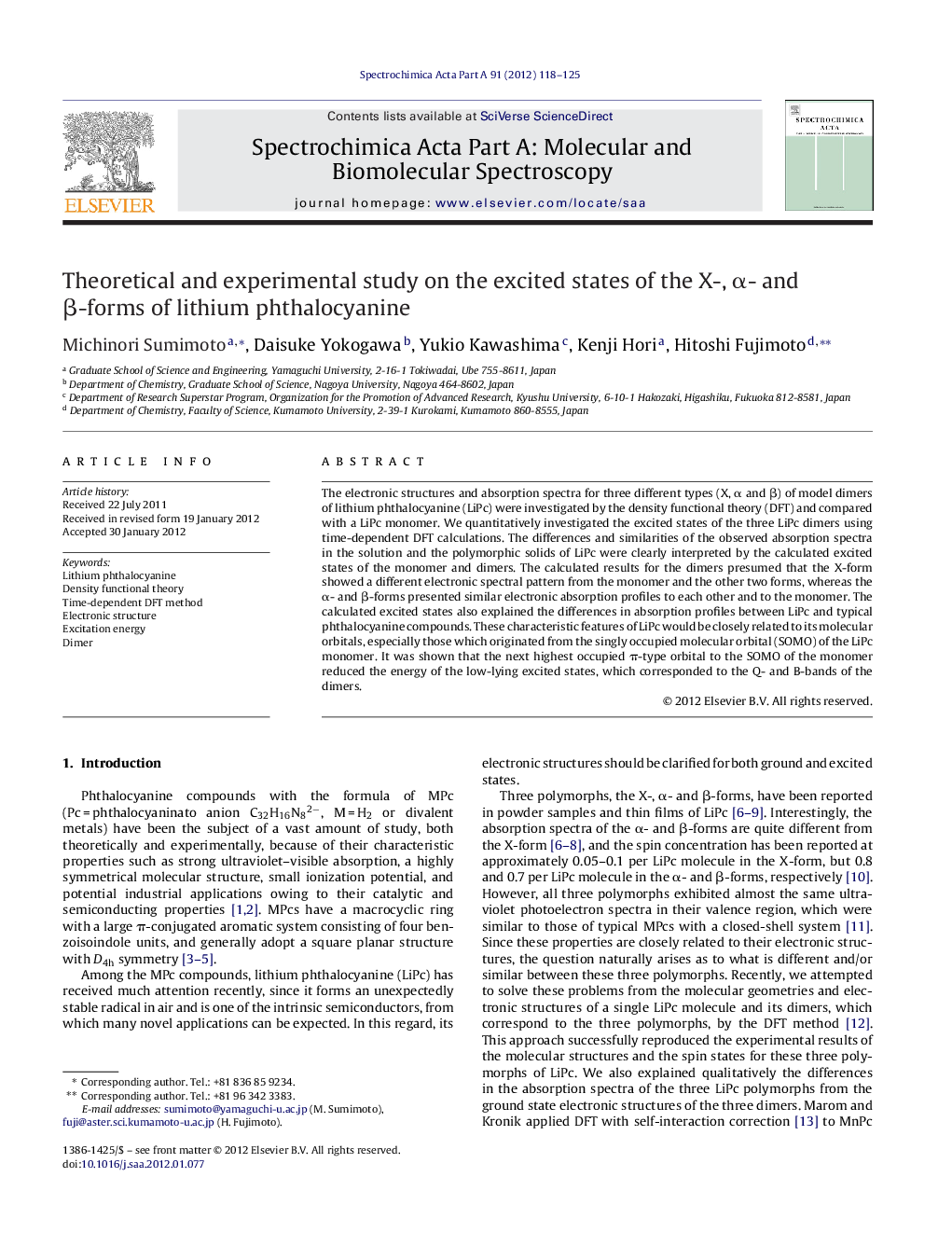| Article ID | Journal | Published Year | Pages | File Type |
|---|---|---|---|---|
| 1232993 | Spectrochimica Acta Part A: Molecular and Biomolecular Spectroscopy | 2012 | 8 Pages |
The electronic structures and absorption spectra for three different types (X, α and β) of model dimers of lithium phthalocyanine (LiPc) were investigated by the density functional theory (DFT) and compared with a LiPc monomer. We quantitatively investigated the excited states of the three LiPc dimers using time-dependent DFT calculations. The differences and similarities of the observed absorption spectra in the solution and the polymorphic solids of LiPc were clearly interpreted by the calculated excited states of the monomer and dimers. The calculated results for the dimers presumed that the X-form showed a different electronic spectral pattern from the monomer and the other two forms, whereas the α- and β-forms presented similar electronic absorption profiles to each other and to the monomer. The calculated excited states also explained the differences in absorption profiles between LiPc and typical phthalocyanine compounds. These characteristic features of LiPc would be closely related to its molecular orbitals, especially those which originated from the singly occupied molecular orbital (SOMO) of the LiPc monomer. It was shown that the next highest occupied π-type orbital to the SOMO of the monomer reduced the energy of the low-lying excited states, which corresponded to the Q- and B-bands of the dimers.
Graphical abstractThe excited states were calculated using the optimized geometries of a free LiPc monomer and the three model dimers, and the obtained results will be discussed in comparison with experimental absorption spectroscopic data.Figure optionsDownload full-size imageDownload as PowerPoint slideHighlights► The absorption spectra for three LiPc dimers were investigated by the TD-DFT method. ► The differences and similarities in the absorption spectra between the solution and each polymorph of LiPc were clearly interpreted. ► The calculated excited states explained the differences in absorption profiles between LiPc and typical phthalocyanine compounds.
